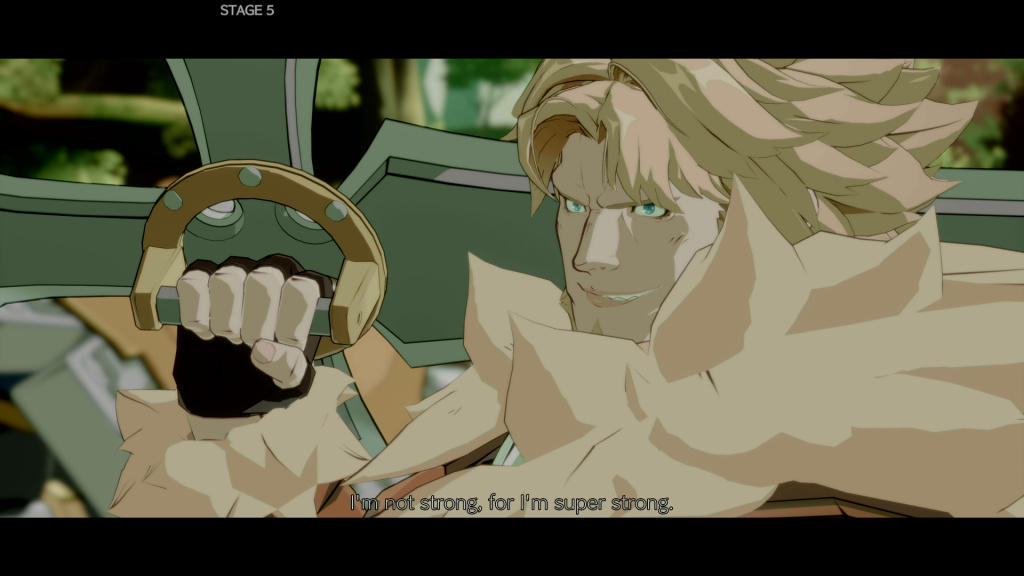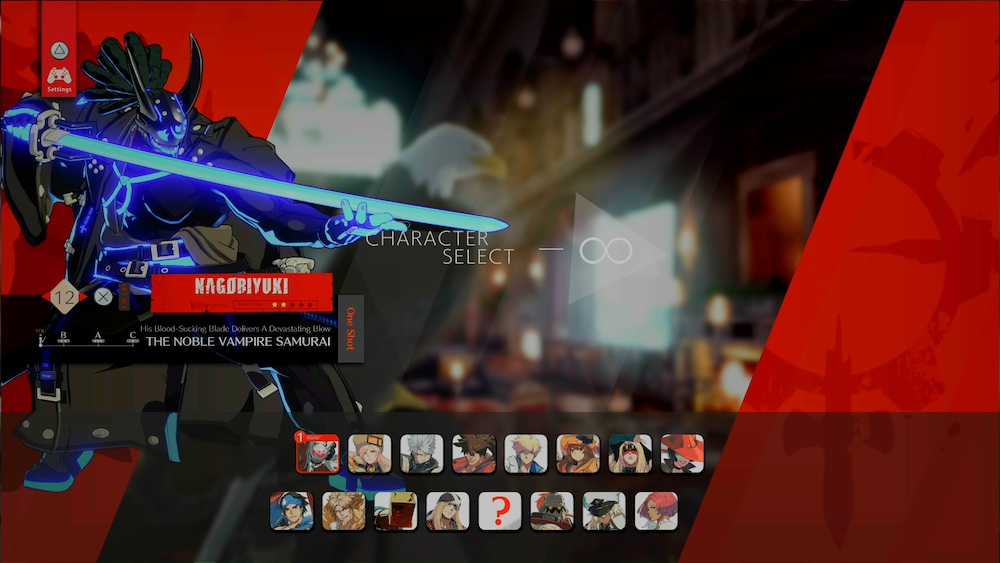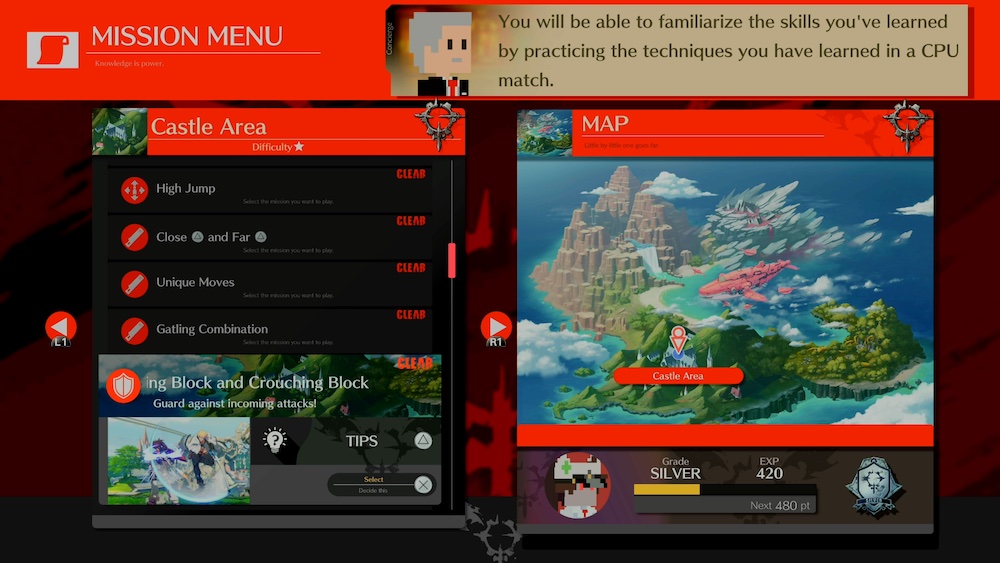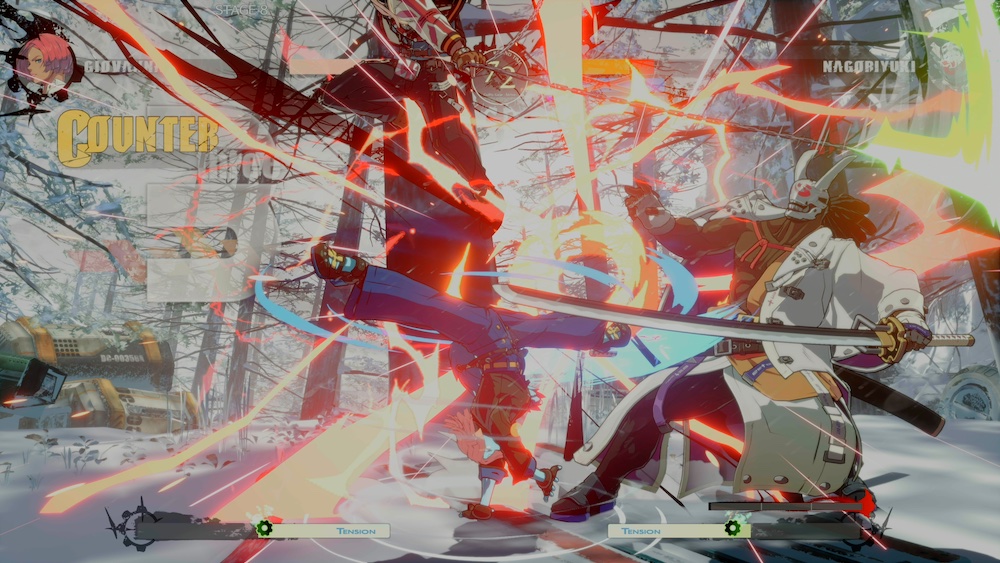When Blazblue first released, there was a lot of hype for Guilty Gear. The improved visuals and flashy combo system seemed perfect for the franchise. When Arc System Works got to Guilty Gear again, it was with Xrd. It took graphics to another level and made a game that is simply stunning to look at and even more fun to play. Over time they’ve further enhanced their design and experience, leading to Guilty Gear Strive. With a new direction, characters and actions, does it live up to the franchise or fall short of previous titles?
Arc System Works has always challenged the notion fighting games lack a story and they take it to another level in Guilty Gear Strive. Before worrying about story, there is a whole section dedicated to explaining the series lore, mythos and history to newcomers or those looking for a recap. Glossary keeps things simple by giving practically every element players could ask for an explanation. It’s so extensive it even includes Leopaldon, the goofy creature with a dog in its mouth, that was the boss in Guilty Gear Isuka. Correlation gives various charts at a variety of places that explain relationships, key events, standings and even character art from that period of time. These can also lead to glossary explanations if you forgot who Johnny is or why Justice was a big deal. If that isn’t enough, there is also a chronology, that touches on every event in the game between 1945 and 2187.

These study aids will help you if you want to get into Guilty Gear Strive’s story. For this game, story is a roughly three and a half hour long movie that is broken up into 10 distinct chapters. Before starting players are informed there is no gameplay, with players having the option to stop during chapters or play the full thing. Regardless of which choice you make, it can be stopped and saved at literally any point.
As for content, it’s very hit and miss. This time the story largely follows I-No and her rather mysterious quest. Ky, Sol and other notable characters try to figure out what it is, ultimately leading to a climatic showdown. I’d say pacing is something of an issue if you’re not huge on the lore side of Guilty Gear. There is a lot of talking, positioning and in some cases build up that works if you’re into the larger part of the franchises story, otherwise they just feel like filler. This can make a three hour movie take forever, though the finish is nice. It also explains some of the gameplay changes that players were likely wondering about. But, like most things, it does end with a tease for bigger things in the future.

Thankfully, story is its own adventure that isn’t needed to fully experience the action. You won’t unlock a character, massive sum of cash or anything noteworthy, so it’s up to you to decide if it’s important or not.
Changing story is far from the only difference in Guilty Gear Strive. One feature I have always praised Arc System Works for is how through the tutorial is and this is no exception.
Here, players have the traditional training mode to practice moves, along with a tutorial and missions. While I’d say tutorial doesn’t do much, it’s more an introduction to very fundamental elements, missions challenge what is typically done and expected. Instead of inputting a series of buttons to achieve a combo, they focus on practical skills that will help you succeed. The roughly 100 missions are broken up into a variety of different tasks. Initially these take the place of what you’d expect from tutorial, how to block a throw, roman cancel and more. What is nice is that they’re not really forgiving to unskilled players.

My favorite example of this was the standing block and crouching block mission. All you need to do is block three of Ky’s attacks in a row without missing and then do so three or more times to complete it. Ky does not follow any pattern, though he is limited to two moves, with the intent being players need to not only read his attack, realize it’s better to low block and then change to high during his long attack. These skills are later utilized in Fuzzy Guard. This time players need to fight Leo and block a two hit combo. It’s easy to know when to block, standing is when he glows gold and lower is when he doesn’t, but being able to recognize, react and utilize these skills is what makes this task genius. There are also a couple devoted to character combos using a specific mechanic, punishing certain attacks from each enemy and how to deal with every mechanic. It’s a lot to learn but it’s great that Arc System Works gave players the tools to succeed.
If you’re still not confident in your ability or just want to play offline, there is an arcade and survival mode. Both are nothing special, survival is defeating unlimited enemies until you lose and arcade is eight fights with a little dialogue thrown in but they give players something to do. Difficulty is based off performance, over choice, making it easier to find the ideal difficulty, especially if you lack the ability to play as certain characters.
That is another thing Guilty Gear Strive does well. Every character is given a decent overview of what they’re all about, be it balanced, rushdown, one shot or even unique, so you have an idea of how these characters are meant to be played.

While each character has a different approach, how it is utilized varies. Rushing down a player works best when you pressure them into making a mistake, with a lot of the balanced players working best with a block and punish approach. Unlike the previous games, combos are useful but it’s more tactics that win battles. Knowing when to block, input specific moves and cancel will get you further than knowing when exactly to one attack and then do another, though both skills are needed if you want to go far.
But, this push towards fundamentals and away from things like one hit finishes, makes it a bit more accessible. It will be interesting to see how well this plays out long term and works for tournaments, but I imagine it will do well.
Part of this is how exciting the average fight is. Each move has a bit of flare to it, with certain specials having a delightful animation. These are the same elements that were praised in Dragon Ball FighterZ and stand out here, be it Faust giving every character an amusing face or I-No spawning wings that bright out an amp. Music is equally involved, with many of the stages including vocal tracks and diverse set pieces.
Guilty Gear Strive Review Verdict
Guilty Gear Strive brings out some of the best elements of Guilty Gear Xrd and combines them with what Arc System Works learned from Dragon Ball FighterZ. It makes for a thrilling fighter that is an absolute delight to both play and watch. It isn’t perfect, like the story won’t appeal to everyone, and it would be nice to see more new faces or even some more old ones, it still delivers an experience that fans and newcomers alike can enjoy.
[Editor’s Note: Guilty Gear Strive was reviewed on PlayStation 5 and a copy was provided to us for review purposes.]

